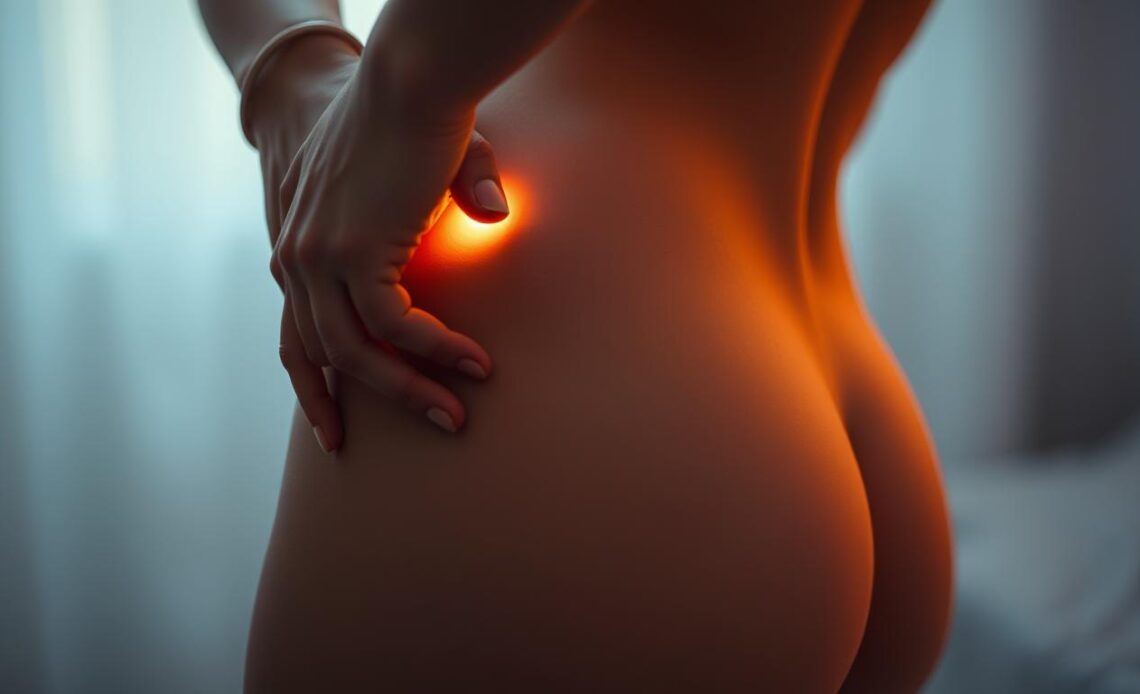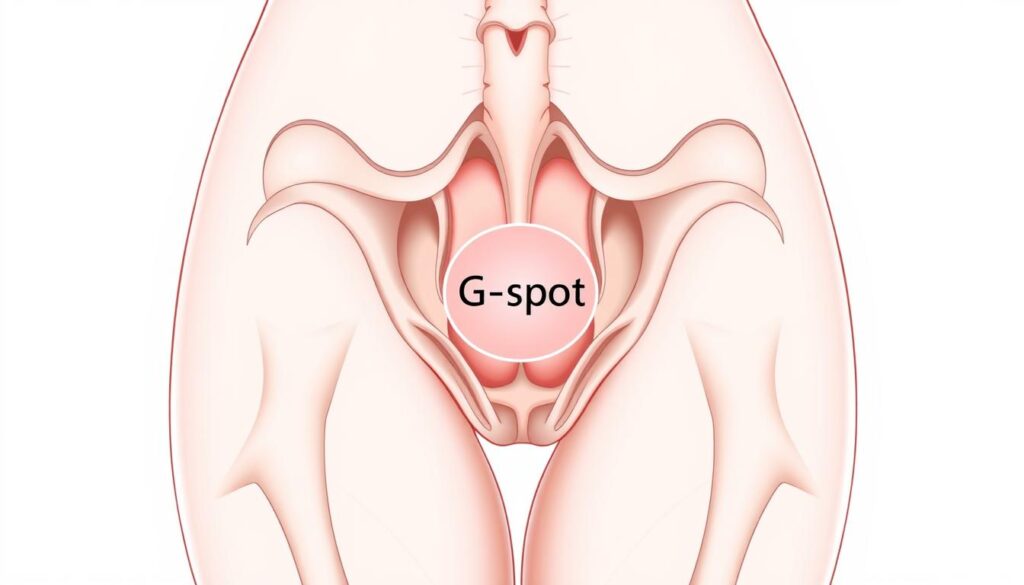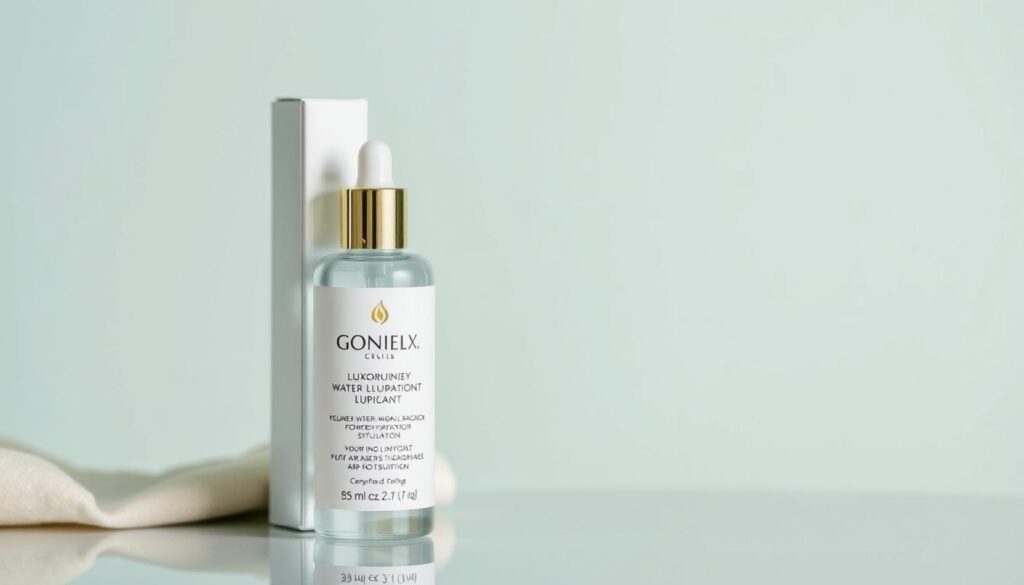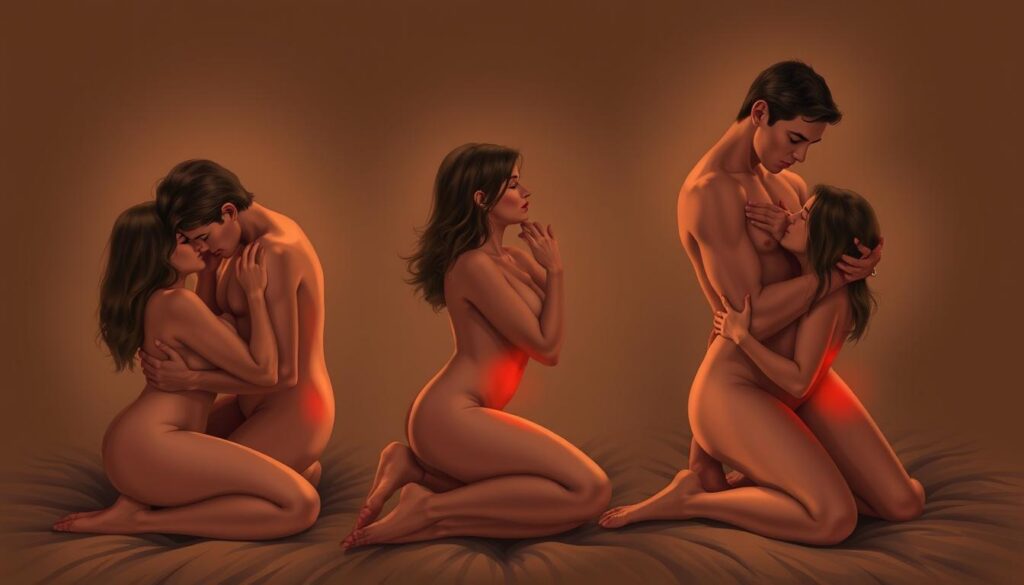
The concept of the G-spot has been a topic of interest and debate in the scientific community for decades. First identified by German gynecologist Dr. Ernst Gräfenberg in the 1950s, this erogenous zone is believed to be located on the anterior wall of the vagina. Stimulation of this area is thought to trigger significant sexual arousal and potentially lead to intense orgasms.
Despite extensive research, including medical imagery and anatomical explorations, the existence and role of the G-spot remain a subject of discussion. As we explore the journey of discovering and understanding the G-spot, we will address common questions and misconceptions about its location and function. For more detailed information on the G-spot, you can visit Healthline’s article on the G-spot in.
Our goal is to provide practical guidance on how to locate and stimulate this potentially powerful erogenous zone for enhanced pleasure. Understanding your body’s unique anatomy is essential for sexual satisfaction, and G-spot exploration can be a significant part of this self-discovery journey.
Key Takeaways
- Understanding the concept and potential benefits of G-spot stimulation.
- Learning practical techniques for locating and stimulating the G-spot.
- Exploring the connection between G-spot stimulation and enhanced sexual pleasure.
- Recognizing the importance of individual anatomy in sexual satisfaction.
- Acknowledging the role of self-exploration in discovering personal erogenous zones.
Understanding the G-Spot: Myth or Reality?
To comprehend the G-spot, we must first explore its definition and the surrounding scientific discourse. The G-spot, named after Dr. Ernst Gräfenberg, has been a subject of interest and debate in the scientific community.
What Is the G-Spot?
The G-spot is often described asthe tissue that separates the vaginal wall from the clitoris. Many people still don’t know what the clitoris is actually shaped like, partly because it’s an understudied area in health research. The clitoris is actually the same length as a typical penis but is shaped like a wishbone, with the visible “nub” being just a smallpart of it. Research suggests that what we know as the G-spot might be better referred to as theclitourethrovaginal, or CUV, complex, where the clitoris, urethra, and anterior vaginal wall interact.
The Scientific Debate
The existence and nature of the G-spot have been subjects of much speculation. Someresearchersargue that it’s not a separatestructurebut part of the larger clitoral network that extends internally. Variousstudieshave both supported and questioned its anatomical reality. The difficulty in studying thisareadefinitively has led to varying experiences amongwomenregarding G-spot stimulation.
| Aspect | Description |
|---|---|
| Historical Context | Named after Dr. Ernst Gräfenberg, who first identified it in the 1950s |
| Anatomical Perspective | Part of the larger clitoral network, not a separate structure |
| Current Understanding | Referred to as the clitourethrovaginal (CUV) complex |
The Anatomy of Pleasure: Where Is the G-Spot Located?
The G-spot is often cited as a highly sensitive area that can lead to intense orgasms, but its exact location can be tricky to pinpoint. Research indicates that the G-spot is typically located about 2-3 inches inside the vagina on the anterior vaginal wall, which is the front wall closest to the belly button.

The Clitoral Network Connection
Modern studies suggest that the G-spot is not a separate entity but is closely linked to the clitoris. The internal structure of the clitoris wraps around the vaginal canal, and stimulating the G-spot area may actually be stimulating the internal portions of the clitoris through the vaginal wall. This connection is part of what researchers now call the clitourethrovaginal complex, which plays a significant role in the sensations associated with G-spot stimulation. For more information on the G-spot, you can visit Natural Cycles.
Individual Variations in Anatomy
It’s essential to acknowledge that there are significant individual variations in female anatomy, which can affect the location and sensitivity of the G-spot. What works for one person may not work for another, making it crucial to approach G-spot stimulation with patience and communication. Some women may find that their G-spot is more sensitive, while others may not experience the same level of sensitivity. Exploring and understanding one’s own body is key to discovering what works best. Additionally, incorporating various techniques and tools, such as those discussed on this page about anal toys for, can also enhance intimacy and pleasure.
How to Find Your G-Spot: A Step-by-Step Guide
Finding the elusive G-spot requires patience, relaxation, and a willingness to explore. To start this journey, it’s essential to understand that self-exploration is key. Instead of searching for it during partnered sexual activity, it’s easier to locate the G-spot through solo exploration.
Creating the Right Environment
To begin, create a relaxed and comfortable environment that fosters self-exploration. Stress and tension can hinder your ability to experience pleasure, making it crucial to find a quiet, private space where you feel at ease. Start by getting into a comfortable position, such as lying on your back with your knees bent, which can help you access the G-spot area more easily.
The “Come Hither” Motion Technique
Once you’re comfortable, you can start by massaging the opening to your vagina before inserting your fingers or a sex toy. Using lubrication can enhance the experience by reducing friction. Then, using your fingers or a toy, make a “come hither” motion by lifting upward toward your belly button. This technique involves inserting a finger or toy 2-3 inches into the vagina and curling upward to locate the G-spot area.
Signs You’ve Found It
As you explore, pay attention to the sensations you’re experiencing. Signs that you’ve found your G-spot include a different texture, often described as ridged or spongy, increased sensitivity, or a sudden urge to urinate (which is normal and not a cause for concern). Remember, the goal is not to hit a specific spot but to find what feels best for you in that region. Stimulation of this area can lead to heightened arousal and potentially intense pleasure.
It’s essential to remember that finding and stimulating the G-spot is a process that takes time and patience. The journey of exploration is valuable, regardless of whether you experience intense pleasure from this specific spot. By understanding your body and what brings you pleasure, you can enhance your overall sexual experience.
Essential Tips for G-Spot Stimulation
The journey to discovering the full potential of G-spot stimulation involves several essential tips. To enhance your experience, it’s crucial to understand the techniques and mindset required for effective G-spot stimulation.
The Importance of Arousal and Foreplay
Arousal and foreplay are vital for G-spot stimulation. When you’re already aroused, the tissue in this area becomes more engorged and sensitive, making it easier to find and more responsive to touch. Dedicate time to foreplay before attempting penetration to ensure a more pleasurable experience.
Using Lubrication Effectively
Using lubrication can significantly enhance the G-spot stimulation experience, especially during penetrative sex. Even if you have plenty of natural lubrication, adding some lube can make things glide smoother and enhance sensations. For G-spot stimulation, consider using a water-based lubricant for comfort and pleasure.

Pressure and Rhythm Techniques
Pressure is a key factor in G-spot stimulation. Start by applying gentle pressure and gradually increase it to find what works best for your body. Experimenting with different rhythms can also help in achieving the most pleasurable experience. Communicate with your partner about the pressure and rhythm that feels good.
Patience and Experimentation
Patience and experimentation are crucial elements of G-spot exploration. Approach this as a journey of discovery rather than a goal-oriented task. Take your time to explore different techniques and be open to new experiences. Communicating with your partner can also enhance the experience, helping them understand what feels good and how to provide the most pleasure.
Best Sex Positions for G-Spot Stimulation
The key to unlocking G-spot pleasure lies in choosing the right sex position. Certain positions allow for deeper penetration and more direct stimulation of the G-spot, which is located on the anterior wall of the vagina.

Rider Position (Cowgirl)
The Rider or Cowgirl position is highly effective for G-spot stimulation because it gives the receiving partner control over the angle, depth, and rhythm of penetration. By adjusting their movements, they can position themselves for optimal G-spot contact. Instead of moving up and down, moving back and forth can target the G-spot more effectively.
Doggy Style
Doggy Style
is another versatile position that naturally anglespenetrationtoward the front vaginal wall, making it an excellent choice for G-spot stimulation. Both partners have control over the depth and angles, and there are many variations to enhance the sensation. This position allows for a more direct hit on the G-spot area.
Spooning Position
The Spooning position is a comfortable and intimate option that allows for deep penetration at an angle that often provides consistent contact with the G-spot area. The penetrating partner can hit the anterior wall repeatedly, stimulating the G-spot.
Modified Missionary Position
A Modified Missionary position, with a pillow under the receiving partner’s hips, can change the angle of penetration, making it more conducive to G-spot stimulation. This adjustment can transform a familiar position into one that’s perfect for targeting the G-spot.
| Sex Position | Benefits for G-Spot Stimulation |
|---|---|
| Rider Position (Cowgirl) | Control over angle, depth, and rhythm; optimal G-spot contact |
| Doggy Style | Direct penetration toward the front vaginal wall; versatile |
| Spooning Position | Deep penetration; consistent G-spot contact |
| Modified Missionary Position | Adjusted angle of penetration; effective G-spot targeting |
G-Spot Orgasms and Female Ejaculation
Understanding the nature of G-spot orgasms and their relationship to female ejaculation can enhance our knowledge of female sexual response. The discussion around whether G-spot orgasms are distinct from clitoral orgasms is ongoing, with some individuals reporting different experiences.
Are G-Spot Orgasms Different?
The distinction between G-spot orgasms and clitoral orgasms is a topic of debate. Some people report that vaginal orgasms feel different — they last longer, feel more intense, and give a whole-body experience. However, if the G-spot is an internal stimulation of the clitoris, as some scientists suspect, the orgasms it causes would be clitoral instead of vaginal.
Understanding Squirting
Female ejaculation, or “squirting,” is a release of clear fluid caused by stimulation of the female genitals. It might or might not induce or accompany an orgasm. A study found that around 40% of women reported having ever squirted. The connection between G-spot stimulation and female ejaculation is complex, involving pressure on the area that can trigger fluid release from the Skene’s glands near the urethra.
Conclusion: Embracing Your Unique Pleasure Journey
Our journey through understanding the G-spot reveals that sexual pleasure is a highly personal and complex experience. The G-spot is just one part of the erogenous zones that contribute to our overall pleasure. As we explore our bodies, it’s essential to approach this journey with curiosity and patience, recognizing that what works for one person may not work for others.
Effective communication with our partner about our preferences and experiences can significantly enhance our pleasure and lead to more satisfying sexual encounters. By embracing our unique erogenous zones and pleasure responses, we celebrate the diversity of sexual experiences, moving away from a one-size-fits-all ideal.
FAQ
What is the G-Spot, and where is it located?
The G-Spot is a sensitive area within the vagina, typically found on the vaginal wall, about 2-3 inches inside. Its exact location can vary from person to person, and it’s believed to be connected to the clitoral network.
How do I stimulate my G-Spot effectively?
To stimulate your G-Spot, use the “come hither” motion with your fingers or a sex toy, applying gentle pressure. Ensure you’re adequately aroused, as this increases sensitivity in the area.
Can all women experience G-Spot orgasms?
While many women can experience G-Spot orgasms, individual anatomy and responses to stimulation vary. Some may need more clitoral stimulation or a combination of both for optimal pleasure.
Are there specific sex positions that enhance G-Spot stimulation?
Yes, certain positions like Rider Position (Cowgirl), Doggy Style, and Spooning Position can facilitate deeper penetration and target the G-Spot more effectively.
What is the connection between G-Spot stimulation and female ejaculation?
Some women experience female ejaculation, or squirting, during intense G-Spot stimulation. This is a natural response, though not all women experience it, and it’s not a prerequisite for enjoying G-Spot stimulation.
Can using a sex toy help in finding and stimulating the G-Spot?
Absolutely, a sex toy designed for G-Spot stimulation can be very effective. It can provide consistent pressure and motion, helping to locate and stimulate the area.
Is G-Spot stimulation necessary for an orgasm?
No, it’s not necessary. Many women achieve orgasm through clitoral stimulation alone. G-Spot stimulation is just one of many ways to experience pleasure and orgasm.

